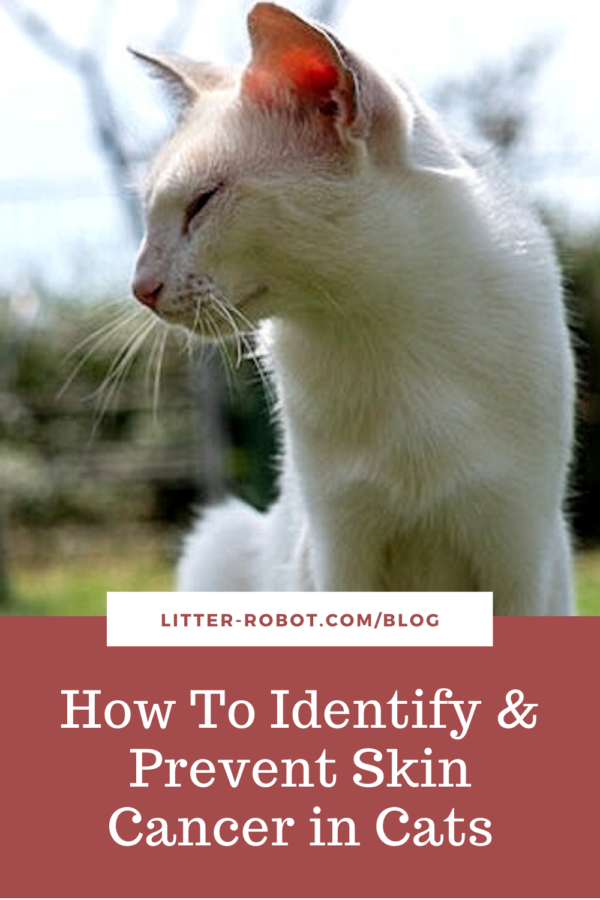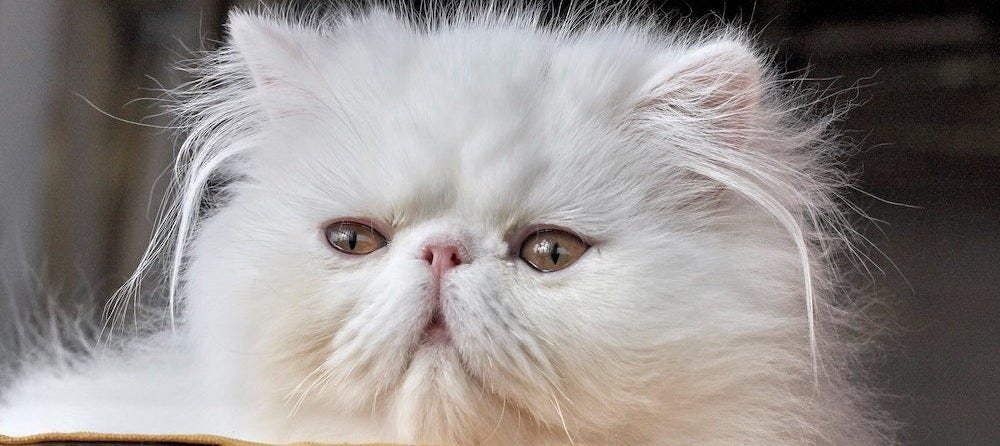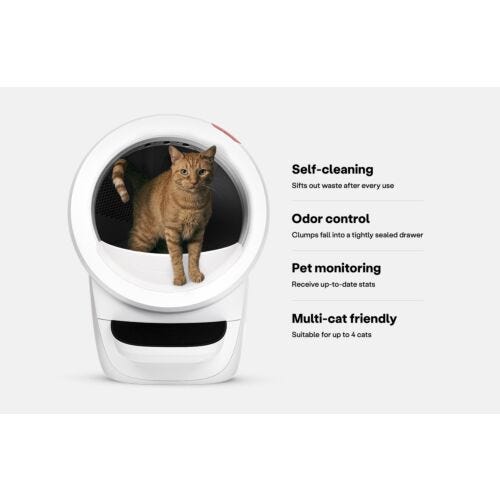Most of us know how important it is to wear sunscreen for protection against the sun’s damaging rays. Unfortunately, we often forget about protecting our pets. Skin cancer in cats is more common than most pet parents realize—even if your cat is always indoors. Learn more about which cats may be prone to skin cancer and how to identify the signs.
What causes skin cancer in cats?

As is often the case with humans, the most common cause of skin cancer in cats is excessive exposure to sunlight. And for those of you who keep your kitties indoor-only (hooray!), you’re not totally out of the woods either:
Indoor cats that regularly lie in window sills and patches of sunlight can also be exposed to harmful UV radiation. A sunburn on your cat may appear as red skin or hair loss around the temples, the outer tips of the ears, eyelids, lips, nose, and belly.
The skin is regularly exposed to many tumor-causing factors other than solar radiation in the environment: this includes chemical carcinogens (like asbestos or tobacco smoke) and viruses. Hormonal and genetic factors may also play a role. Other less common causes of skin cancer in cats include serious burns and physical trauma. Some cats are genetically predisposed to be more likely to develop cancers of the skin; hormones, particularly in unaltered cats, can influence this possibility too.
Which cats are more prone to skin cancer?

Any kitty with a lot of exposure to sunlight is at risk, but the following types and breeds of cats are more likely to develop skin cancer:
- Hairless cat breeds, such as the Sphynx cat
- Cats with white or light-colored fur
- Cats with very short or thin coats
- Older cats
- Cats that live in high altitudes
Some cats are less prone to the development of particular skin cancers. For example, Persian, Siamese, and Himalayan cats are less likely to suffer from squamous cell carcinoma than other breeds.
4 most common types of cat skin cancer
Cornell Feline Health Center reports that the four most common types of cat skin cancer are:
- basal cell tumors
- mast cell tumors
- fibrosarcoma
- squamous cell carcinoma
Basal cell tumors
Basal cell tumors are growths that stem from the base of the top layer of the skin. They can be benign (noncancerous), or malignant (cancerous). A benign growth of these cells is a basal cell tumor, while a malignant growth is called a basal cell carcinoma. Benign tumors can present as firm, solitary, often hairless or ulcerated lumps anywhere on the body and are common in older cats. Domestic Longhair, Himalayan, and Persian are the breeds most at risk.
The malignant form of this cancer often appears as flat, easily spread ulcers on the head, legs, or neck. Unlike benign basal cell tumors, these carcinomas are not usually raised up from the skin. Persians have a particular predilection for this form of basal cell tumor, but it is generally found in older cats.
Mast cell tumors
Mast cell tumors, the second most common skin tumor in cats, occur in two variations: a mast cell type and a histiocytic type. Occurring in most middle to older age cats, they can present anywhere on the body but typically affect the head and neck the most as hairless growths. While they can be malignant, these tumors are usually benign.
Fibrosarcomas
Fibrosarcomas are a type of soft tissue sarcoma that grows rapidly and can spread. There are three recognized types of fibrosarcoma in cats: multiple form caused by the feline sarcoma virus; solitary form not caused by feline sarcoma virus; and injection site sarcomas, which develop in the soft tissues where cats are commonly vaccinated. This type of skin tumor varies greatly in appearance, size, and interpretation on physical exam.
Squamous cell carcinoma
We want to call particular attention to squamous cell carcinoma (SCC) because it tends to be malignant and aggressive if it goes undetected. If detected early, however, this type of skin cancer in cats is highly treatable.
SCC is most often caused by sun exposure. UV radiation damages a cat’s DNA so that cells begin dividing and multiplying, resulting in tumors and lesions—these are more commonly found around the temples, the outer tips of the ears, eyelids, lips, nose, belly, and even in the mouth.

Melanoma
Melanoma in cats is thankfully rare. It usually presents as a dark spot on the face, notably the ears, neck, nose, mouth, or eyes; less commonly it can develop on other areas of the body, such as the lower legs, particularly in middle-aged to older cats. Unlike SSC, cat melanoma is not typically associated with sun damage, as melanoma in humans is.
Cat skin cancer symptoms
Keep an eye out for the following signs of cat skin cancer, particularly in any areas where you’ve noticed red skin or hair loss:
- Small, crusty, or scabby sores
- Lesions with irregular, hardened borders
- Lesions that are ulcerated and oozing fluid and/or blood
- Any unusual lumps or bumps on the body
- Discolored patches
- Rashes
- Non-healing sores
For squamous cell carcinoma of the mouth, be on the lookout for these signs:
- Excessive salivation and drooling
- Inappetance
- Weight loss
- Bad breath
- Swelling of the upper or lower jaw
- Ulceration of the inside of the mouth
Diagnosis and treatment
Make an appointment with your veterinarian if you notice any of the above symptoms in your cat. Treatment recommendations vary greatly from simply prescribing topical medication to treat your cat’s sores to recommending fine needle aspirates or biopsies of the skin.
While most bumps and lesions found on cats are benign, you can never be too cautious. Your vet will likely perform a fine needle aspiration or biopsy to confirm if there is cancer and which type. The vet may also order X-rays to determine whether the cancer has spread to other areas of the body.
From there, surgical removal of tumors may be warranted, along with radiation therapy, chemotherapy, or cryotherapy.
If detected early, most skin cancer in cats has a good prognosis. However, skin cancer that goes unnoticed, particularly an aggressive form like SCC, is often fatal. It’s estimated that only 10% of cats detected with late-stage squamous cell carcinoma have a 1-year survival rate.
Prevent skin cancer with less exposure & cat sunscreen

As much as it may pain you to do so, we recommend limiting your kitty’s exposure to direct sunlight at least between the hours of 10 a.m. and 2 p.m. Additionally, you can invest in window shades or glass reflectors to block UV rays.
If you can’t stand the thought of ruining your cat’s basking in the sun, please consider applying cat sunscreen. Ask your vet for advice on finding specially formulated cat sunscreen. At the very least, you might consider applying a sunscreen with the following qualities:
- Baby-friendly
- Fragrance-free
- Includes ingestion warning
- Non-staining
- SPF of at least 15, preferably 30+
- No ingredients listed as PABA, zinc oxide, octisalate, or any other salicylates—if your cat licks the sunscreen off, these ingredients could be toxic to them.
While skin cancer in cats is more common than you’d think, recognizing its early signs can make a world of difference. Use these prevention tips to ensure you have one happy, healthy kitty household!
Sources:
- Squamous Cell Cancer: Dangerous
- Tumors of the Skin in Cats
- Squamous Cell Carcinoma of the Skin in Cats
- Squamous Cell Carcinomas in Cats
- Skin cancer in cats








